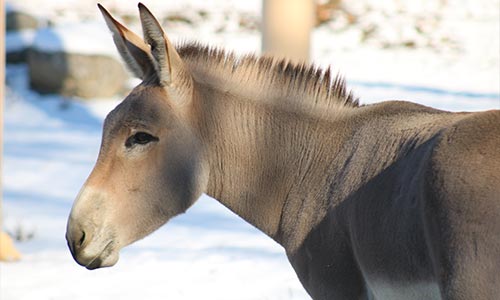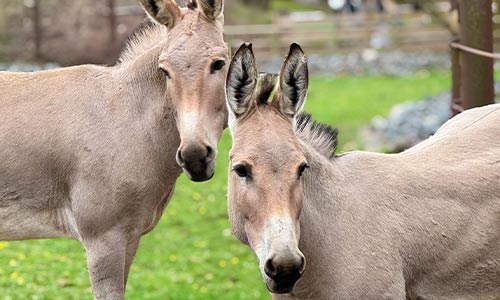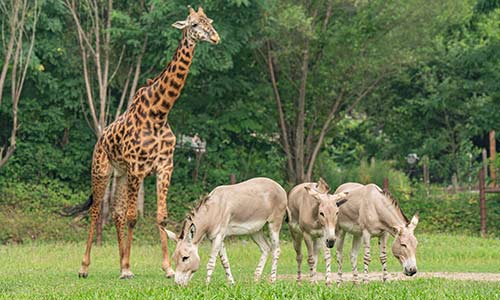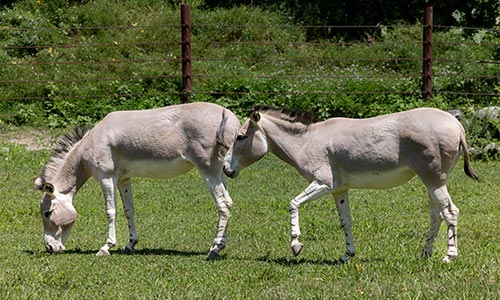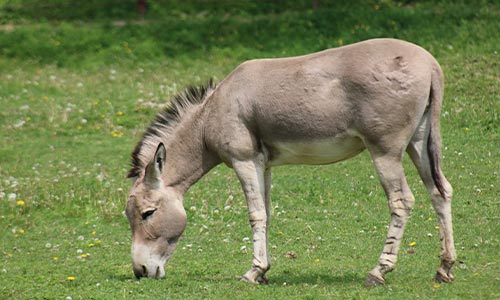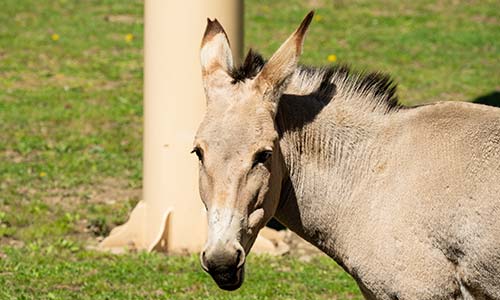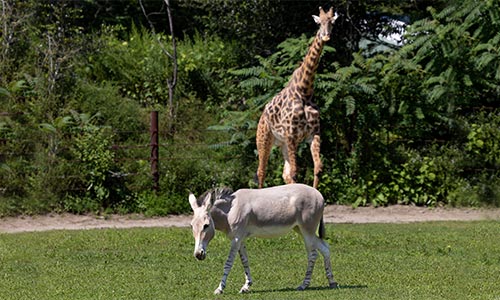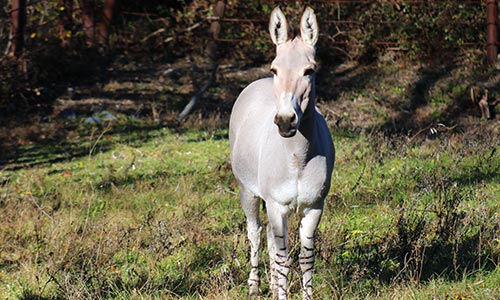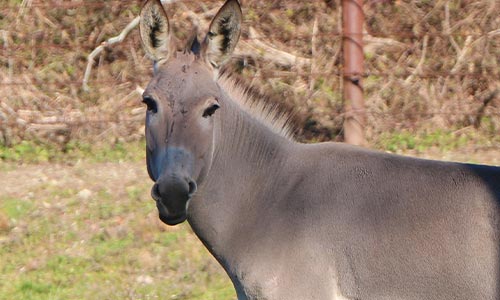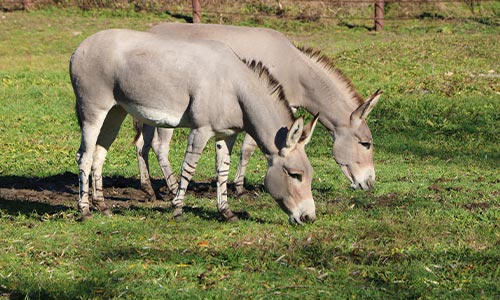Somali Wild Ass
Equus africanus somaliensis
| ⚠️ Animal Alert These animals need to stay indoors and off exhibit if it’s 32 degrees or below and/or icy. Visit our Winter Visits page to learn more about the amazing animals you can see during the winter. |
About the Somali Wild Ass
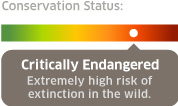
Geographic Range:
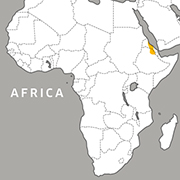
Class: Mammalia
Order: Perissodactyla
Family: Equidae
Genus: Equus
Species: africanus
Subspecies: somaliensis
The Somali wild ass is one of three subspecies of African wild ass, and the smallest of all wild equids (horses, asses and zebras). Asses are mostly gray in color, with a white belly and black-and-gray spiked manes. They have horizontal black-and-white striped legs and narrow hooves (the narrowest of any equid) to help them navigate their rough, rocky habitat.
Somali Wild Ass Facts
Appearance:
The Somali wild ass is one of three subspecies of African wild ass, and the smallest of all wild equids (horses, asses and zebras). Both males and females are similar in appearance. Like zebras, wild asses have upright, bristly manes. Asses are mostly gray in color, with a white belly and black-and-gray spiked manes. They have horizontal black-and-white striped legs and narrow hooves (the narrowest of any equid) to help them navigate their rough, rocky habitat. Like all equids, Somali wild asses grow long winter coats to protect them from the cold, and they shed these coats in the spring.
Size:
The smallest of the wild equids, adult asses stand 4.2 - 5.5 ft at the withers (1.2 - 1.5 meters) and weigh an average of 600 lbs (275 kg). Foals weigh 50-60 lbs (23 - 27 kg) at birth and are born after a gestation of 11 - 12 months.
Diet:
Wild asses are herbivores, eating mainly grasses, shrubs and other desert plants. They use their upper and lower incisor teeth to clip grass, and their molars to grind.
Reproduction:
Male asses reach sexual maturity at 2 years of age, and females between the ages of 2 and 4. In the wild, mares produce one foal every other year. Like most equids, mares give birth in the spring after a year-long gestation period. Foals weigh between 50-60 pounds. Within an hour, the foal is up on its feet and can follow its mother. Within five days, the foal will start nibbling on grass, and is weaned by 12 - 14 months.
Social Structure:
Somali wild asses have a variable social structure because they live in habitats with sparse resources. Adults typically live alone, although mares will sometimes form small herds. In areas of more resources, adults may band together to form larger, temporary herds.
Behavior:
Adult stallions maintain territories of up to nine square miles, usually around areas with available water, and will fight with other stallions that approach females in their territory. Because they live in extremely hot climates, asses graze mainly at dawn and dusk when it’s cooler. Although they are able to go longer without drinking than other equids, this species still needs to drink every two to three days.
Communication:
Asses communicate using visual signals and vocalizations. They will send messages to each other through the positioning of their ears, head and body. They can also bray, and sound more like a donkey than a horse.
Habitat/Range:
Wild asses are found in deserts and scrubland in Somalia, Somaliland, Eritrea and Ethiopia.
Median Life Expectancy:
About 20 years in the wild
Threats:
All wild equids—horses, zebras and wild asses—are threatened. The Somali wild ass is the most endangered of all the wild equids. African wild asses are divided into two subspecies: Somali and Nubian wild asses. The Nubian wild ass may be extinct already, and there are none in zoos at this time. There are less than a few hundred Somali wild asses left in their native habitat due to hunting, encroachment of humans/agriculture, and potential inbreeding with domestic animals.
Fun Facts:
- Domesticated donkeys descended from Somali wild asses. In the 16th century, the Spanish brought domesticated African wild asses to the southwestern United States. Descendants of these asses, known as burros, still roam the Southwest.
- Somali wild asses are the smallest wild equid species, and the only one with striped legs.
- Although small, this ass is fast! This species has been clocked at 30 mph!
You Can Find This Animal in the Giraffe Savannah
Striped Superstars
Somali wild asses are the smallest wild equid species, and the only one with striped legs.
You may also like
At Franklin Park Zoo:
At Stone Zoo:

